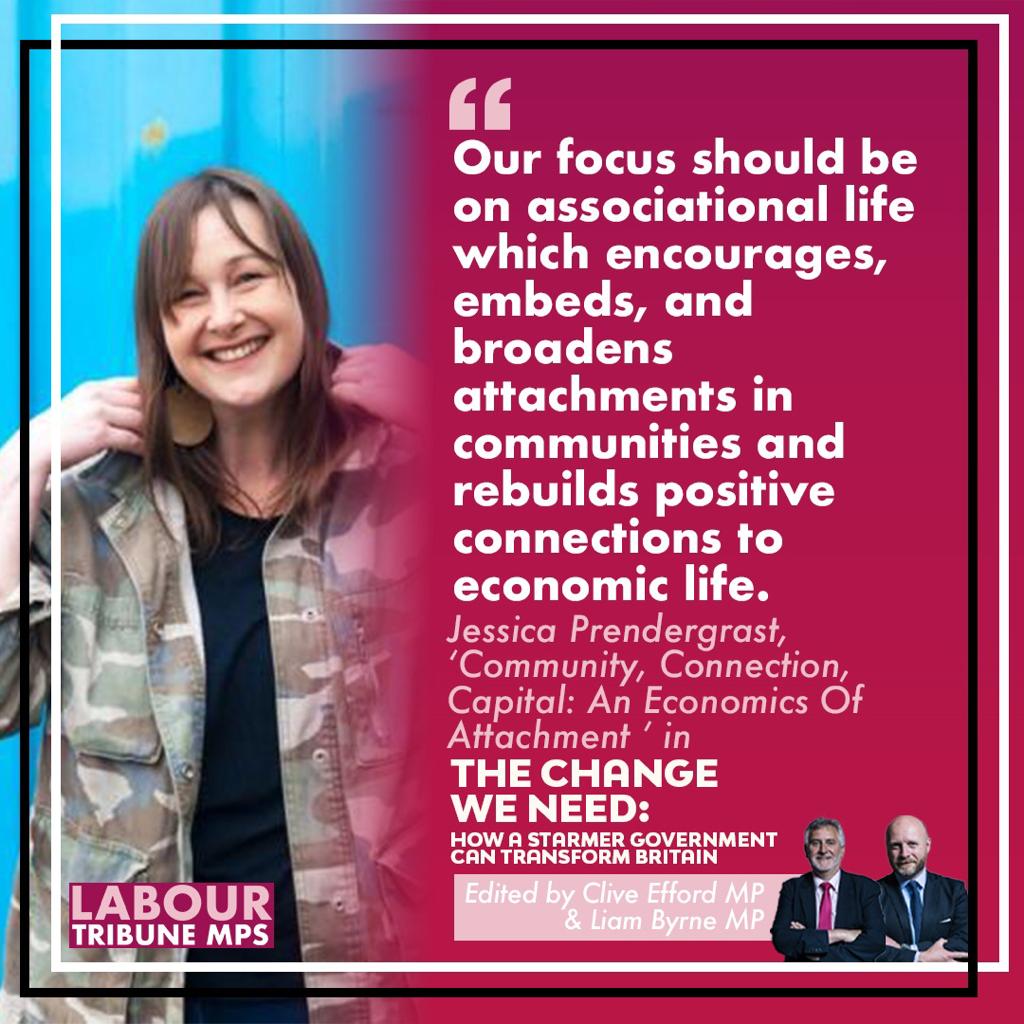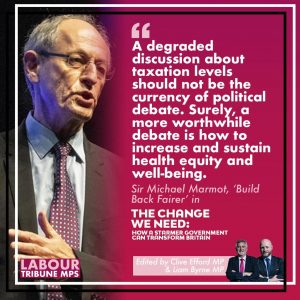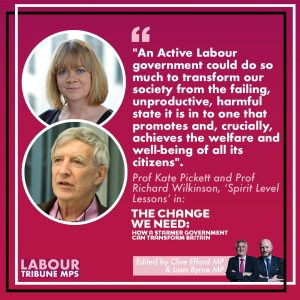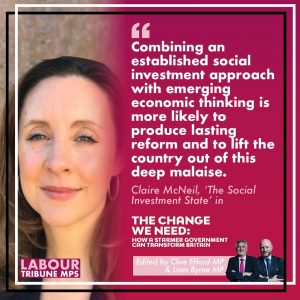Every day in my small, coastal, ‘left behind’, town in the peripheral South West, on at least ten occasions, I ‘stop-and-chat’ to someone. They might be passing me on the railway crossing or grabbing a coffee. They might be walking their dog or buying a pint. We talk about everything and nothing: the muddled-up weather, if the town is busier or quieter than last year, energy prices, anxiety about the winter, political dithering. But these are not conversations with friends. Although we have often ‘stopped and chatted’ for years, sometimes I don’t even know their names. These are simply the casual interactions of everyday life in a place with a strong community.
During Covid, this community acted as the first line of defence. Its social nature was a source of resilience and purpose and reflected that we have social capital in abundance. At the last count, more than 140 social or community organisations and initiatives operated in the town, which has only 5000 residents – from the community choir to a knit-and-natter group, and from sea scouts to social enterprises. This web of connection meant that the community was able to cooperate, innovate and provide solutions, often faster, smarter and at lower cost than either the centralised state or the disconnected market. During the first lockdown, for example, when hard infrastructure failed, our strong, well-linked community rapidly re-deployed resources and developed mechanisms, networks and processes to help — setting up phone lines, training volunteers, enabling payments, delivering essential food and medicine, and offering emotional support. In all this, it was social capital — shared connections, relationships, networks — in which repeated community interactions had built the trust, care, friendship and reciprocity that made the community capable of organising itself. It is dense, multi-layered, distributed and serves to connect and protect the most vulnerable.1
In his excellent book, Palaces for the People (2020), Eric Klinenburg argues, however, that it is not social capital alone that matters, but rather ‘social infrastructure’. According to Klinenburg, robust social infrastructure fosters social capital and supports community life. By contrast, degraded, weak social infrastructure inhibits social activity, leaving families and individuals to fend for themselves. Shoddy social infrastructure discourages interaction and impedes mutual support while places where casual interaction is a feature of everyday life do better. ‘Left behindness’ is, in this sense, social as well as economic. It encompasses social infrastructure. And as multiple crises loom from extreme energy poverty to climate catastrophe, the implications are obvious.
Instinctively, we think of social infrastructure as predominantly within the public sector or voluntary and charitable sectors (represented by schools, libraries, hospitals, parks and by churches, community organisations, cultural hubs). But the experience of Covid highlighted a different story — that what matters most is whether something supports associational life and with it community attachment. Local publicans repurposed their kitchens to provide meals for the elderly and those isolating. Greengrocers delivered parcels to doorsteps. Taxis became community cars. Social infrastructure, it was clear, cross-cut tired sectoral boundaries: cafes, hairdressers, bookshops, and pubs played vital roles, not just in the everyday economy, but in supporting life-saving connections. The duality between those involved in the community Covid effort and those not, was primarily one of attachment, built on sustained, recurrent interactions between people generating a shared connectedness to people, place and experience. In my town this infrastructure created huge resilience in a place which is nonetheless dismissed as ‘left behind’, with all its negative connotations.
Yet here the town’s strong social capital and robust social infrastructure are, in part, a feature of this very ‘left-behind-ness’. The economy has always been different here — more local, more distributed. It has always been out on a limb — coastal, rural, peripheral — perhaps more ‘left alone’ than ‘left behind’. With few customers, with little money to spend, the market has never cared much for us and the financialised, rentier, neoliberal version of the economy that has done such damage to communities in recent decades has had less impact than in other places. We also retained our traditional industry — a heavy industry paper mill — longer than most, and with it a more attached economy. The mill made major contributions to the social infrastructure of the place — building housing, libraries, public halls, chapels and much more and contributed to community life, cultivating a sense of shared history, identity and meaning that stretched across generations. This attached local economic role underpinned a strong community, and helped create jobs in which people felt value, connection and agency in their work.
Around the country though, a withering of interlinkages between economic and community life has meant our economy has become detached from who we are, what we need and what gives us security, meaning and agency—what gives us a sense of control. Instead, large parts of the economy have been released from the attachments to communities that had in some way acted as a constraint, even where they remain hosted in communities (private equity-owned care homes and retail property being the most obvious examples). Attachment theory teaches us that good, strong, solid relationships are what enable us to feel safe to explore, investigate and discover our place in the world. Without them, we focus our energy on relationships that are dysfunctional or missing, wrapped up in the present and focused on fear and hurt. The effect is witnessed in the reduction in belonging, connection and sense of value experienced in many post-industrial communities, expressed as resentment and grief2, and in the anger, division and blame that characterises societal relations even in the places that are apparently sky-high on the ‘levelling up’ see-saw.
But here, in my little ‘left-behind’ town, we have been insulated from some of these last few decades of ‘progress’. Our attachments remain. In his new book, The Quiet Before (2022), Gal Beckerman talks about the gentle build-up of alternative futures that bubbles away in underground networks and peripheral places ready to fill the gaps when the system fails. We see this now: in places that have long been ignored by the market or where the state has historically played a smaller role, an alternative is already emerging. The answers provided by the community enterprises and everyday businesses in ‘left-behind’ places, as well as the problems they face, tell us how the economy is already being reshaped, where reform is most needed, and perhaps most importantly, what could follow in the years to come. The focus is on associational life which encourages, embeds and broadens attachments in communities and rebuilds positive connections to economic life.
The policy prescriptions that fall out are complex and expansive, and get to the heart of economic frameworks — challenging norms of ownership, governance, resourcing and motivation. Plenty of levers exist including revision to institutions, company law, regulatory structures and investment strategies. Government could invest heavily in relational infrastructure and community and cultural assets — places which encourage gathering, connectedness and congregation and should only invest in physical infrastructure (from flood defences to transport) which can be designed to be pro-social. It could recognise that the entrepreneurial spirit is as much driven by a concern to maximise social impact as to maximise profit, witness in powerful community and social enterprise innovation in ‘left-behind’ places, and it should redesign structures and funding to reflect their different incentives.3 It could rebuild connected places by investing in community ownership of vital assets: supporting the mass ‘buy up’ rather than ‘sell off’ of unused properties on high streets and city centres. It could link capital to community: requiring every private sector beneficiary of government funds (including ‘levelling up’ funds) to give up some equity to the community in exchange — an entirely normal transaction in equity investment.4 It could work to create decentralised networked systems of financing for local businesses, addressing the substantial market failure in the capital markets that constrains locally-hosted companies from investing in their places.5
More broadly, Government could incentivise the growth of a much bigger fourth sector of socially-conscious, attached businesses: for example, by changing tax rules to prioritise rather than penalise social enterprises — cutting corporation tax to zero for companies that are purpose- rather than profit-driven. It could promote forms of steward-ownership, encourage transitions to employee-owned companies and mandate workers on boards. Ultimately, it should seek to reform the prevailing systems to embed a values- not profit-driven economy, including by legislating hard for the triple bottom line (and adding a fourth pillar of cultural and associational value which usually gets ignored).
Throughout, it should avoid the instinct to make community and associational policy (and social infrastructure) only about politics not economics — this is not about a more engaged local polity, it’s about a more connected economy. In this way, by rebuilding associational life, by taking cues from the places where there is an established community-based drive to address inequality and environmental crisis, by reconnecting with economic life, a more distributed, local, attached form of economics can help us reconsider who is really ‘left-behind’ and what the ‘progress’ we want looks like.
Jessica Prendergrast left Westminster for West Somerset more than a decade ago, trading social research for social entrepreneurship. She has since co-founded several successful community and cultural social enterprises.





